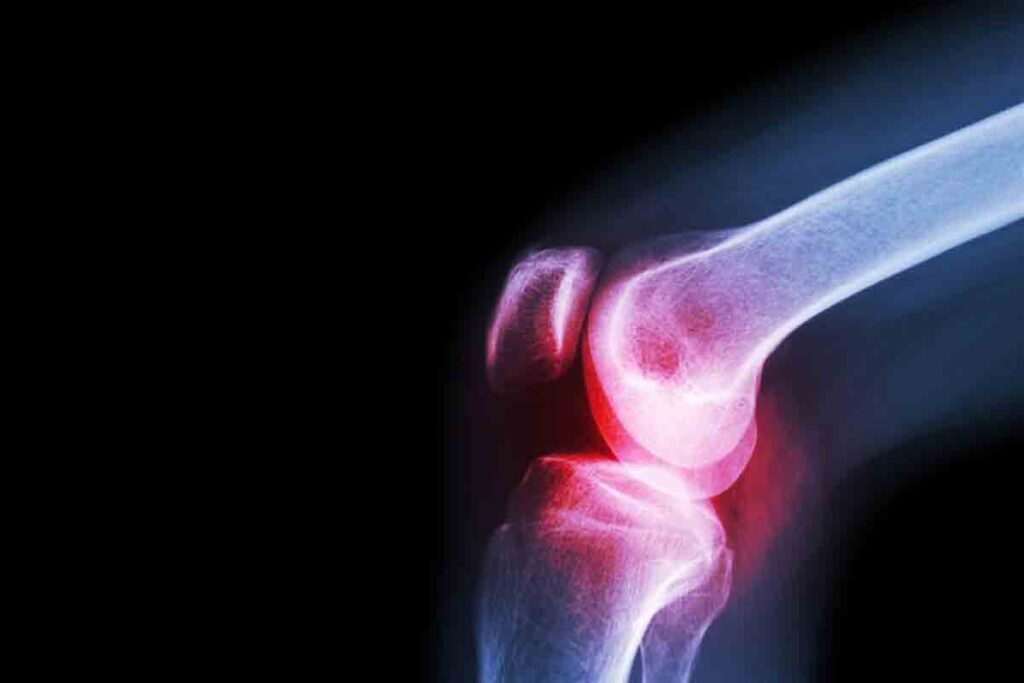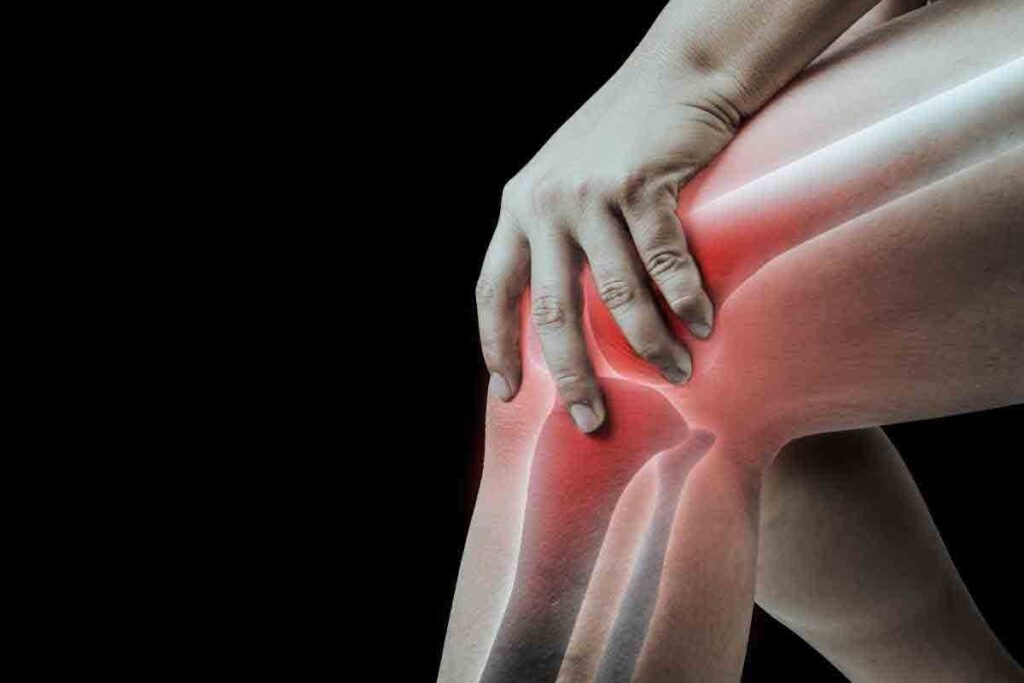
It’s important to know the signs of bone marrow pain to get help fast. Diseases like multiple myeloma, leukemia, and myelodysplastic syndromes can hurt a lot. They often cause pain in the back, ribs, or hips.
At Liv Hospital, we know how key it is to spot these signs early. For example, multiple myeloma is a cancer that affects plasma cells. These cells help fight infections by making antibodies. Spotting the signs of bone marrow disease can lead to the right care.

The bone marrow is a spongy tissue inside some bones. It’s key for making blood cells. It helps create red blood cells, white blood cells, and platelets.
Bone marrow is in bones like hips, ribs, and vertebrae. It has blood vessels and special cells for blood cell growth. There are red and yellow marrow types, with red making blood cells and yellow being fat.
Blood cell making, or hematopoiesis, starts with stem cells. These cells turn into red blood cells, white blood cells, and platelets. Red blood cells carry oxygen, white blood cells fight infections, and platelets help blood clot.
Healthy bone marrow is vital for our health. Problems like bone marrow inflammation, bone marrow infection symptoms, and bone marrow swelling symptoms can cause big issues. These include anemia, infections, and bleeding problems. Healthy marrow keeps our blood cell levels right.

It’s key for both patients and doctors to know the signs of bone marrow pain. This pain can signal serious issues like leukemia. It’s important to understand these symptoms.
Bone marrow pain usually feels like deep pain in areas like the hips, spine, or ribs. It can be a dull ache or a sharp pain.
Pain can occur in the:
Bone marrow pain can be sudden (acute) or long-lasting (chronic). Acute pain comes from a specific cause, like a fracture. Chronic pain lasts longer and can be linked to diseases like leukemia.
Bone marrow pain is unique because it comes from inside the bones. It’s different from muscle or joint pain, which comes from outside the bones.
Other signs of bone marrow pain include feeling very tired, getting sick often, and bleeding easily. These symptoms can also show up if calcium levels are too high.
| Symptom | Description | Possible Cause |
| Fatigue | Feeling weak or tired | Anemia |
| Frequent Infections | Recurring infections | Low white blood cells |
| Easy Bruising/Bleeding | Bruising or bleeding easily | Low platelets |
It’s vital to talk about any pain during medical visits. Discussing your pain with your doctor can help manage it better.
Understanding multiple myeloma is key to grasping its effects on bone marrow and pain. It’s a blood cancer where bad plasma cells grow in the bone marrow.
It starts with one bad plasma cell in the bone marrow. As more grow, they mess up bone repair, causing osteoporosis and lytic lesions. This raises the risk of fractures and pain in specific spots.
Multiple myeloma messes with bone marrow’s normal work. The bone marrow is the soft, spongy part of bones where blood cells are made. In this cancer, bad plasma cells push out healthy cells, causing problems.
The pain from multiple myeloma can differ. It’s usually a dull ache that gets worse with movement. Some feel sharp pains, like stabbing, if there are fractures or if the bones are badly damaged.
| Pain Characteristic | Description |
| Dull, aching pain | Worsens with movement, common in advanced stages |
| Sharp, stabbing pain | Often associated with fractures or significant bone damage |
Patients with multiple myeloma may also have other symptoms. These include tiredness, anemia, infections, and high calcium levels. This can cause confusion, weakness, and constipation.
“The diagnosis of multiple myeloma is often made after a patient presents with bone pain or a pathological fracture.” – A leading hematologist
If you have ongoing bone pain or other symptoms, see a doctor. Early treatment can greatly improve your life and chances of recovery.
Leukemia and bone marrow pain are closely linked. Leukemia, a blood and bone marrow cancer, causes discomfort. This is due to the buildup of cancer cells in the bone marrow, leading to inflammation and damage.
Not all leukemias cause bone pain. Acute leukemia, which grows fast, is more likely to cause pain. Acute Lymphoblastic Leukemia (ALL) and Acute Myeloid Leukemia (AML) are types that often lead to bone pain.
“Bone pain is a significant symptom in many patients with acute leukemia,” as noted in medical literature. The pain is often described as a deep ache or a sharp, stabbing sensation.
Leukemia-related bone marrow pain can occur in various parts of the body. Common locations include the long bones of the arms and legs, the ribs, and the sternum (breastbone). In some cases, patients may experience joint pain or swelling, which can be mistaken for arthritis or other joint-related conditions.
Patients with leukemia may also experience systemic symptoms. These include fatigue, weight loss, fever, and night sweats. If the spleen is involved, patients may feel fullness or discomfort under the left ribs.
As one medical expert notes, “The presence of systemic symptoms alongside bone pain should prompt further investigation for leukemia or other hematologic malignancies.”
Understanding the connection between leukemia and bone marrow pain is key for timely diagnosis and effective management. Recognizing the types of leukemia that cause bone pain, where pain occurs, and other symptoms helps healthcare providers offer better care.
Bone marrow pain isn’t just from cancer. Myelodysplastic syndromes can also cause a lot of discomfort. While we know about multiple myeloma and leukemia, other conditions can also lead to this painful symptom.
Myelodysplastic syndromes (MDS) are disorders where blood cells don’t form right. This can cause bone marrow pain because of the poor blood cell production. It leads to anemia, infections, and bleeding problems.
Symptoms of MDS include feeling tired, weak, and short of breath. Some people also feel bone pain, mainly in the lower back and pelvis. This is because the bone marrow expands.
“Myelodysplastic syndromes represent a complex and heterogeneous group of myeloid neoplasms characterized by ineffective hematopoiesis and a risk of progression to acute myeloid leukemia.”
Bone marrow infections and inflammation, or osteomyelitis, can cause a lot of pain. These infections can be from bacteria, fungi, or viruses. They can spread through the blood or from nearby tissues.
Symptoms include pain, swelling, redness, and warmth at the site. You might also feel fever, chills, and tiredness.
| Condition | Symptoms | Treatment Approach |
| Myelodysplastic Syndromes | Anemia, infections, bleeding disorders, bone pain | Supportive care, blood transfusions, medications to stimulate blood cell production |
| Bone Marrow Infections | Localized pain, swelling, redness, fever, chills | Antibiotics, antifungals, or antivirals; surgical drainage in some cases |
| Metastatic Cancer | Bone pain, fractures, hypercalcemia, weight loss | Chemotherapy, radiation therapy, pain management, surgery |
Metastatic cancer to the bone marrow happens when cancer cells spread to the bone marrow. This can cause bone pain, fractures, and other issues.
The most common cancers to spread to the bone marrow are breast, prostate, lung, and kidney cancers. The pain from metastatic cancer can be very severe. It often needs a treatment plan that includes pain management, chemotherapy, and radiation therapy.
It’s important to understand these conditions and their effects on bone marrow health. Recognizing the different causes of bone marrow pain helps healthcare providers create better treatment plans. This can improve patient outcomes.
Bone marrow disease can cause many symptoms that need doctor care. This is because bone marrow makes blood cells. When it doesn’t work right, the whole body can be affected.
Anemia is a common symptom of bone marrow problems. It happens when the bone marrow can’t make enough red blood cells. Or, when these cells don’t work well.
This leads to less oxygen getting to tissues and organs. People feel very tired and weak.
Anemia makes daily life hard. It can cause shortness of breath, dizziness, and pale skin too.
Bone marrow disorders can lower white blood cell counts. White blood cells fight infections. Without enough, people get sick more easily.
These infections can be serious and need strong treatments.
Thrombocytopenia means having too few platelets. Platelets help blood clot. Without enough, people bruise easily, bleed a lot, and take a long time to stop bleeding.
This can cause big health problems, like:
Hypercalcemia is high calcium levels in the blood. It can happen in bone marrow disorders like multiple myeloma. Cancer cells can mess with calcium levels.
Symptoms include:
It’s important to know when to get medical help for bone marrow pain. This pain can be a sign of many health issues. Some of these need quick medical care.
Some symptoms with bone marrow pain need you to see a doctor right away. These include:
If you notice any of these, get medical help fast. Early treatment can greatly improve your chances of recovery.
There are also symptoms that shouldn’t be ignored. These include:
If you have these symptoms, see your doctor. It’s important to get checked out.
Tell your doctor everything about your bone marrow pain. Be ready to share:
Sharing all the details helps your doctor find the right diagnosis and treatment. Your doctor wants to help you, so don’t hold back.
Seeing a doctor if you’re worried about your symptoms is a smart move. Knowing when to seek help can lead to better health outcomes.
Finding the cause of bone marrow pain is complex. It involves several key steps. We’ll walk you through how we figure out what’s causing the pain.
The first step is a detailed physical check-up and medical history. We look for signs that might show what’s causing the pain. This helps us find areas that need more checking.
We ask about the pain’s location, how bad it is, and how long it lasts. We also ask about past health issues, treatments, and family history. This info helps us understand the situation better.
Blood tests are key in diagnosing bone marrow pain. We do different tests to check the blood cell count and bone marrow health. These include a complete blood count (CBC) and blood chemistry tests.
These tests can show if there’s anemia, infection, or cancer causing the pain. For example, a CBC can spot problems with red or white blood cells, which might mean bone marrow issues.
Imaging studies help us see the bone marrow and tissues around it. We use X-rays, CT scans, MRI, and PET scans to find any problems. These studies help us see bone lesions, fractures, or cancer.
For instance, an MRI can show detailed images of the bone marrow. This helps us find changes in the marrow’s structure or composition.
A bone marrow biopsy takes a sample of bone marrow tissue for testing. It helps us diagnose conditions like multiple myeloma or leukemia.
We use a special needle to take the sample from the hipbone or another site. Then, we examine it under a microscope to check the bone marrow cells.
After the biopsy, patients might feel some pain or discomfort. We help them manage this pain and watch for any complications.
By combining physical exams, medical history, blood tests, imaging, and biopsies, we can find the cause of bone marrow pain. Then, we can plan the best treatment.
Managing bone marrow pain needs a mix of treatments. We’ll look at different ways to ease pain and improve life quality.
Pain management is key in treating bone marrow pain. We use medicines and other methods to help. Medicines include:
We also use non-drug options. These are important for pain relief. They include:
It’s important to treat the cause of bone marrow pain. This might mean:
Treating the cause helps manage pain and improves health.
Some therapies offer extra relief. These include:
Always talk to a doctor before trying these therapies.
In some cases, surgery or radiation might be needed. This includes:
These treatments are considered when other options fail or aren’t right.
Dealing with bone marrow pain is complex. We’re dedicated to giving you the care you need to find the right treatment.
Living with bone marrow conditions needs a full plan. This includes medical care, lifestyle changes, and support. Chronic bone marrow pain makes daily tasks hard.
New treatments for diseases like multiple myeloma help people live longer and better. To manage bone marrow pain, we use different strategies. These include pain relief, treating the cause, and sometimes other methods.
A team of healthcare experts is key for those with bone marrow conditions. They work with patients to create a care plan. This plan helps manage symptoms and improve health.
By taking a whole-person approach, people with bone marrow conditions can face their pain better. This way, they can enjoy a better quality of life.
Symptoms include deep, aching pain in bones, like the back, ribs, or hips. This pain can be constant or come and go. It may get worse when you move. You might also feel tired, weak, and more prone to infections or bleeding.
Multiple myeloma causes cancerous plasma cells to build up in the bone marrow. This leads to bone damage and pain. The pain often occurs in the back, ribs, or hips, due to bone lesions or fractures.
Yes, leukemia can cause bone pain. Types like acute lymphoblastic leukemia (ALL) or acute myeloid leukemia (AML) can lead to pain. This pain is often in the long bones of the legs and arms or in the sternum.
Myelodysplastic syndromes (MDS) are disorders where blood cells are poorly formed or dysfunctional. This can lead to bone marrow failure. While MDS itself may not cause pain, it can lead to anemia, infections, or bleeding. These can indirectly cause discomfort or pain.
Bone marrow pain is deep and aching, felt in the bones themselves. It’s different from joint or muscle pain. It can signal an issue with the bone marrow, like cancer or a disorder.
Tests include a physical exam, medical history, blood tests, and imaging studies like X-rays or MRI. A bone marrow biopsy is also used to look at bone marrow cells directly.
Treatment varies based on the cause. It may include pain management, treating the underlying condition, or complementary therapies. In some cases, surgery or radiation therapy might be needed.
Seek medical help for persistent or severe pain, along with symptoms like fatigue, weight loss, fever, or bleeding. Early diagnosis and treatment are key to managing conditions effectively.
Yes, healthy lifestyle changes can help. Eating well, staying hydrated, exercising, and managing stress can improve health. This may help alleviate some symptoms of bone marrow conditions.
Ignoring bone marrow pain can delay diagnosis and treatment. This can lead to complications like fractures, infections, or cancer progression.
Follow your doctor’s instructions to prepare for a bone marrow biopsy. This may include stopping certain medications, arranging for a ride home, and understanding the procedure and recovery.
Yes, therapies like acupuncture, massage, or relaxation techniques can help manage pain. Discuss these options with your healthcare provider to ensure they’re safe and right for you.
Subscribe to our e-newsletter to stay informed about the latest innovations in the world of health and exclusive offers!
WhatsApp us